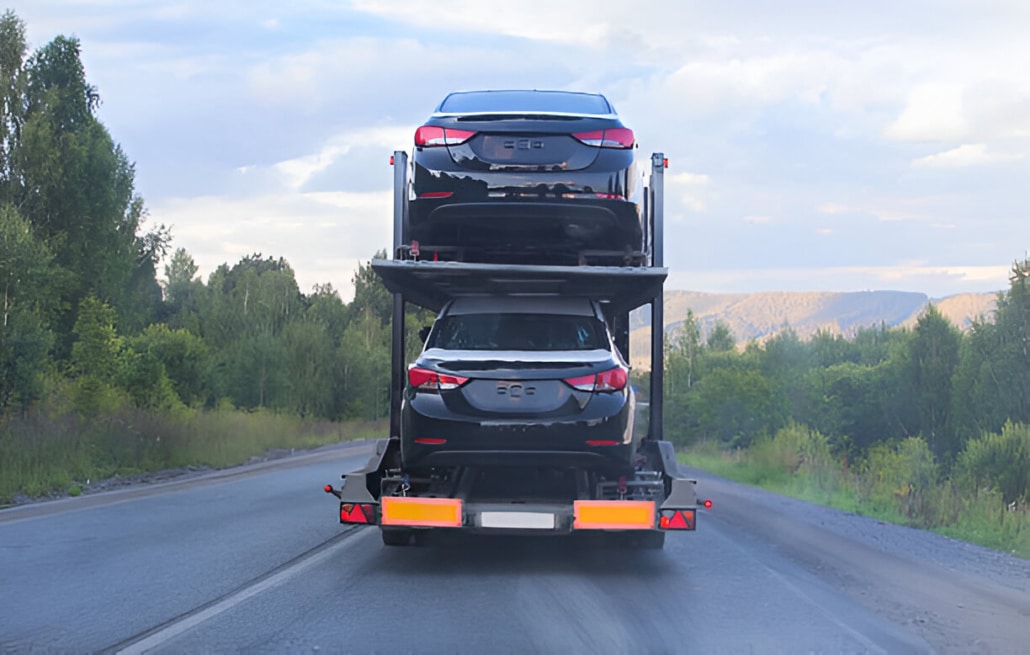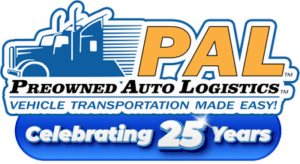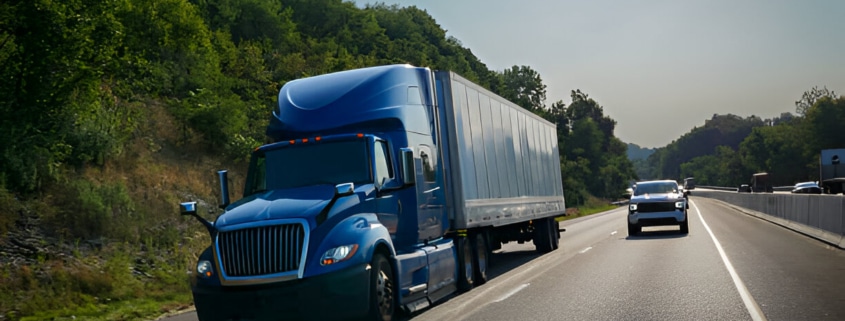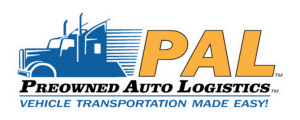How to Ship a Car across the Country: A Step-by-Step Guide for First-Time Movers
How much do you care for your car? If you have a vehicle that’s been virtually flawless, then transporting it to your new home might seem daunting. After all, your vehicle should be as comfortable as you are in your new surroundings.
Whether it’s a vintage classic or your dependable daily driver, transporting it should be as easy as driving it off a lot. If you’re not sure how to ship a car across the country for the first time, don’t worry. This guide breaks down the process into easy-to-follow steps, from finding the right carrier to prepping your vehicle, ensuring that your car arrives in pristine condition, no matter the distance covered.
Not only will your vehicle be taken care of, but you’ll also save yourself the pain of an endless cross-country drive. So, without further ado, let’s dive right in.
Why Choose Auto Transport Over Driving?
Shipping your car instead of driving could save you more than a day’s worth of driving for a cross-country relocation! Imagine flying to the destination in 3-5 hours instead of spending days behind the wheel. Travelling long hours by car takes its toll; from mechanical issues to road fatigue. Avoid these by choosing smarter!
Time saved
Taking a break while travelling long-distance by car is crucial for physical and mental well-being. A 2500-mile trip takes about 40 hours when travelling 60 mph; if you add in restroom breaks, refueling, and meal breaks, don’t be surprised if it takes you four days on the road!
Why shoulder this heavy responsibility when there’s a simpler solution? Rely on professional auto transport companies — it’s a safer, more convenient choice. While you arrive at your destination by flight in just a few hours, your car is driving easily in the meantime. When you add it all up, that’s 30+ hours saved! Think of road-tripping in your car while taking all the breaks you need, only without the stress of driving.
Avoid wear and tear
Long-distance driving is not good for your vehicle either. Damage, scratches, and dings are bound to happen and are the result of travelling so many miles. Driving your car thousands of miles from one state to another not only wears on your mental well-being, but also on your vehicle!
Driving thousands of miles wears your tires and engine down. Road damage decreases your car’s resale value. Why not let your vehicle enjoy a ride in a big truck while you do the same on a plane? You will arrive safely at your destination with your car intact.
Cost comparison: Shipping vs. driving
Surely it may sound like driving would be a cheaper option? Wrong! When you think of all the costs associated with driving, think again! To put it into perspective, a cross-country drive covering 2,500 miles, holding 100 gallons of gas costing you $3.50 per gallon, would set you back a whopping $700 just for gas! That’s $350 you will need to spend on fuel alone.
With increased tolls, parking fees, accommodation, and food during the journey, that’s costing you about $150 more for food and lodgings along the way. In total, about $900 spent! And yes, we will not forget the fees associated with long-distance driving. Think of all the parts that could need repair or even the need for a completely new alternator! Do your pocket a favor and think smart before driving.
How the Car Shipping Process Works
Are you wondering how to ship a car? However complicated the process may seem, shipping a vehicle is easy if you know the right steps. Let’s understand how the car shipping companies ship your vehicle.

Booking your vehicle shipment
The first step of shipping your vehicle is deciding to make the shipment and then booking it. You will provide your car’s make, model, year, and size, as well as the pickup and delivery locations and timeframes. Most companies allow you to book online or via phone. At this time, you also select whether you want your car shipped on an open or closed carrier.
When obtaining a quote, make sure to contact several different companies to get the best price for your budget. Once you select your company, you will receive a confirmation of your booking, usually within a day, along with other necessary information about the upcoming process.
Vehicle pickup
When shipping your vehicle, be prepared for the day of the pickup. Make sure to wash your car thoroughly inside and out. It allows you to identify any current damages, so you can use it as a point of reference when examining your vehicle upon delivery.
Remove all personal belongings since they cannot be insured during transport. Make sure your car is empty, the batteries are charged, and there are no fluid leaks. When the driver arrives, they will inspect your vehicle, noting any damages already on your car. You and the driver must both sign a bill of lading, which is a required document that also serves as a shipment receipt. Take a few pictures of your own for reference and make a copy of the keys before giving them to the driver, just in case.
Transport journey
Now that your vehicle’s in the process of being shipped, it’s time to relax. Depending on the distance of the trip, this part of the process could take over a week on a cross-country trip. Most companies offer GPS tracking so that you can follow your vehicle during transport. Your vehicle is insured while on the truck, but find out what the company’s policy is and what the coverage entails beforehand. Your vehicle will either be shipped on an open carrier, where the car is exposed to the elements, or a closed carrier, which protects the vehicle from the weather. Either way, the professionals will keep your vehicle secure so it won’t be damaged during transport.
Delivery and handover
Finally, the delivery! Once your vehicle arrives at the destination, the driver will set up a time to drop the car off with you. Make sure you or someone you trust knows the details of the vehicle inspection and is at the drop-off location. Before signing the delivery receipt, compare your vehicle with your pictures and the bill of lading. If your car is fine, then sign the receipt and register your vehicle in the new state if necessary. If it is damaged, report it right after noticing so your car can be handled properly. And that’s it; your vehicle is shipped to its new location!
Step-by-Step Checklist for First-Time Movers
Several people are hesitant when it comes to shipping their cars for the first time, but it doesn’t have to be stressful. With the right checklist in hand, moving your vehicle to its new destination can be a breeze. Below are the steps to ensure your car shipping experience is easy and hassle-free.
1. Do your research and get quotes
The very first step in shipping your vehicle is to do your research and get quotes. There are tons of vehicle shipping companies out there. Use Google or Bing to find quotes from at least three different companies. You can also visit ratings sites like Yelp to read former customers’ experiences with each company.
A great way to get an idea of the overall customer satisfaction is to pay special attention to comments and ratings from users who had similar shipping needs. Don’t be attracted by the “low-ball” rates, as this might be an indication of poor service. Be sure to work with a company that has experience in transporting the type of vehicle you have.
2. Verify company and carrier licenses
Check the Federal Motor Vehicle Safety Administration’s website to determine if the transport company is registered and confirmed as a legitimate business. All legit and registered transport companies will have a USDOT number. If they can’t provide a USDOT Number, or if the company is not registered with the FMCSA, you should consider going with someone else. Don’t be afraid to ask the company to send you copies of their registrations and insurance if you feel hesitant.
3. Open vs. enclosed
One of the most frequent questions first-time car shippers may have is whether to ship an open or enclosed carrier. Both styles have their pros and cons; it depends on your unique situation. Open transport is the most affordable option because it is also the most common. Open transportation can include anywhere from one to multiple vehicles on the transport truck. Your vehicle is completely exposed to the elements during transit. Enclosed transport is more expensive but provides an extra layer of protection for your car. It keeps your vehicle safe from dirt, debris, rain, and snow, and it’s well-padded and secure. The choice is yours.
4. Prep your car before pickup
Before the driver arrives, there are a few things you want to do with your car. For starters, please give it a thorough wash. Getting it clean will help you spot any upcoming issues. The driver is supposed to inspect your car before picking it up, but it will never hurt to have the information beforehand so you can report any issues right away.
Clean out the inside of your vehicle. You want to remove all personal items for your protection. Never leave cash, electronics, or other valuables in the car during shipping; they will not be covered under your vehicle’s insurance policy. Check for any leaks or other issues beforehand. Make sure your gas tank is no more than 1/4 full to help keep the weight down.
5. Understand the bill of lading
This is an important document that may come in handy if you have any issues with your vehicle during transit. This document is called the Bill of Lading. This will serve as a receipt for your car during transit. When the driver arrives to pick up or drop off your vehicle, you’ll be asked to review this document. When the driver inspects your vehicle, they will document any scratches or dents. Make sure everything is correct before you sign the Bill of Lading. If there are more issues than what’s found and reported, make sure to get everything down and make your copies.
6. Inspect your car at delivery
When your car arrives, do not simply take the keys and wave the driver goodbye. Follow the driver and inspect your vehicle. Compare the Bill of Lading to the current condition of your vehicle. Take notice of the condition of your car’s exterior as well as the interior. If you notice any new damages or issues, it is very important to document this and take immediate action. Most transport companies have a small window of time to file a claim for damages. In most cases, your vehicle will be off-loaded immediately after you take delivery of it, so make sure one of the first things you do is check your vehicle thoroughly before signing the Bill of Lading again. If there is no new damage, rejoice in your success with the shipment and enjoy driving your vehicle!
How Long Does It Take to Ship a Car Across the Country?
While the question “How long does it take to ship a car across the country?” won’t have a universal answer that applies to every situation, there are general timelines that vary based on geographic and logistical considerations. Here’s what determines the shipping time:

How Long Does It Take to Ship a Car Across the Country?
Auto transport typically takes anywhere from seven to 14 days. A coast-to-coast shipment, for example, from New York to Los Angeles, which is about 2,800 miles, will usually take anywhere from one to two weeks. Conversely, shipping your vehicle from Detroit to Chicago (less than 300 miles) will only take one to three days.
Average shipping timelines
For a coast-to-coast trip-say, New York to Los Angeles, about 2,800 miles-most auto transport companies deliver your car in 7 to 14 days. Shorter cross-country routes, like Chicago to Denver (around 1,000 miles), typically take 3 to 7 days. These timelines include pickup, transport, and delivery. Open transport, the most popular option, often moves faster because carriers can haul multiple cars at once. Enclosed transport, which protects high-end vehicles, might take a bit longer due to limited space and fewer trips. Timing also depends on whether you’re flexible with pickup and delivery dates; more flexibility often leads to quicker scheduling.
Other factors that may delay transport
Even with a solid plan, a few curveballs can slow down your car’s journey. Let’s look at the big ones.
Weather
Mother Nature doesn’t always cooperate. Snowstorms, hurricanes, or heavy rain can delay carriers, especially in winter or during storm seasons. For example, blizzards in the Midwest or flooding in the South can force drivers to reroute or pause, adding a day or two to the schedule. Reputable companies prioritize safety, so they won’t risk driving through hazardous conditions.
Logistics
The logistics of car shipping are like a puzzle. Carriers often combine multiple vehicles on one truck, which means coordinating pickups and drop-offs in different cities. If your pickup or delivery spot is off the beaten path, it might take extra time to slot your car into a route. High demand, like during the summer moving season, can also stretch timelines as carriers juggle packed schedules. Choosing a company with a wide network of drivers can help keep things on track.
Remote locations
Live in a bustling city like Atlanta? Your car will likely ship faster thanks to easy access to major highways. But if you’re in a remote area, such as a small town in rural Montana, expect delays. Carriers stick to efficient routes, so out-of-the-way locations may require extra time for pickup or delivery, sometimes adding 1 to 3 days. Be upfront about your location when booking to get a realistic estimate.
Plan smart, stay patient.
Shipping a car across the country usually takes 7 to 14 days, but weather, logistics, and remote locations can nudge that timeframe. Choose a reliable company, ask about tracking options, and build a buffer into your plans. With a little prep, your car will roll into its new home right when you need it.
Tips to ensure faster vehicle shipping
If you want to enjoy the quickest delivery process, you will select an auto transport company based on how quickly you’d like your vehicle shipped. For example, if you want your vehicle shipped as soon as humanly possible, you may want to choose express transport shipping (three to five days). Or you may select open transport (typically faster shipping compared to enclosed transport).
Once you select an auto transport company that works for you and your needs, be upfront with your contact about where you live (especially if you live somewhere far out), how quickly you’d like your car delivered, and any additional questions that may pop into your head. Don’t be afraid to ask questions about the shipping process to ensure you and your auto transport professional are on the same page regarding your shipment’s timeline.
How Much Does Cross-Country Auto Shipping Cost?
Shipping your car, whether from the East Coast to the West Coast or vice versa, is a fantastic way to avoid the rigors of a long road trip. But how much does the vehicle shipping cost? Prices vary, but we’ll explain the typical price ranges, factors that impact prices, and how PAL’s pricing model keeps costs down.
Price ranges for coast-to-coast routes.
For a standard sedan shipped on a coast-to-coast route, say 2800 miles, you’ll pay between $1,000 and $1,600 to ship it on an open carrier. Enclosed transport, protected shipping for high-value and classic cars, will be more expensive, between $1,500 and $2,400.
If you are shipping an SUV or truck, the larger size warrants add-on costs. Open transport will run between $1,200 and $1,800, while enclosed transport will cost between $1,800 and $2,600.
These estimates reflect industry averages, although some specific routes like Florida to California are cheaper and may drop to approximately $1,100 for a sedan, whereas shipping a large vehicle to California may push the cost to roughly $2,000.
Influencing factors
Many aspects play a role in your final price.
- Distance: Distance is the main influencer of cost. Although longer routes will be more expensive overall, the cost per mile will drop. For example, a 2,000-mile route may cost between $0.60 and $0.80 per mile, whereas shorter routes may be in the $1.00 to $2.00 range.
- Vehicle type: Smaller vehicles are cheaper to ship than larger SUVs or modified vehicles that require extra space as well as more fuel to ship.
- Seasonal demand: Summer, from May to September, is our busy season, so rates are higher due to increased demands related to relocations and vacations. Winter, especially January and February, is usually cheaper, but beware, weather can affect your schedule during these months.
- Transportation method: You’ll pay less for an open carrier than an enclosed carrier. Enclosed costs typically run 30%-50% more for the additional protection.
- Pickup and delivery locations: Carrier routes determine your final price. Suburban, urban, and metropolitan routes will be cheaper to ship than remote locations. Drivers may charge an additional $100-$200 to transport your car to a remote area.
PAL’s competitive pricing model explained
Here’s how Preowned Auto Logistics keeps prices reasonable for you:
- Transportation network: We have a vast transportation network of vetted drivers and carriers, and build relationships with the best carriers. PAL helps carriers optimize routes and book cars to minimize fuel bills and keep trucks full and costs down.
- Market-data pricing: Just like any market, prices fluctuate. PAL uses a live database to track past shipments and incoming transport requests to monitor and adjust price quotes while ensuring fair and competitive rates.
- Maintenance, including title and registration fees: Other carriers often exclude taxes and fees that consumers pay for vehicle title changes and registration. These fees are often excluded from quotes but are collected upon delivery. We include these additional transportation costs in the quote and ensure the transport specialist completes the processes upon delivery. This protects you from unforeseen expenses.
Why Preowned Auto Logistics is the Trusted Choice
When you ship a car, you want things to be easy and dependable, whether you are moving cross-country, buying a vehicle online, or moving dealership inventory. Preowned Auto Logistics (PAL) has earned its reputation since 2001, moving vehicles safely and quickly. Proven experience, professional drivers, fantastic reviews, door-to-door service, and clear communication put PAL in a class by itself. Here’s why this company is your best bet.
Proven experience
Since 2001, PAL has been moving vehicles in the U.S. and beyond, including sedans, luxury cars, and vans made for those with special needs.
This experience shows their ability to tackle difficult transport situations, from personal moves to dealer inventory moves and auctions. Customers point out how fast PAL is. One mentioned that their car was delivered in 4 days as they were told it would be. Another person said that PAL was quicker and better than the competition, delivering on time with no damage. This reliability earns the trust of individuals and businesses alike.
Professional drivers
PAL drivers deliver every time. Each PAL driver goes through a tough vetting process to make sure they know how to move vehicles safely. Customers mention drivers like Jeff, who kept them updated on what was going on, and Tito, who took care of their car on the long drive. Whether moving low-clearance exotic vehicles or your family SUV, special equipment and safety checks make sure everything stays safe. This experience means the car arrives safely, no matter how far.
Glowing customer reviews
Customer reviews speak for themselves. After trying other shipping places for years, one snowbird said PAL was “by far the very best.” A first-time shipper liked how PAL explained everything, making the process less scary. From a South Carolina dealer that uses PAL for all vehicle moves to a Texas-to-Florida shipper who liked the no-hassle, upfront price, reviews show how fast, careful, and dedicated PAL is. Even when in a bind, like needing to change something last-minute, PAL gets the job done, resulting in repeat customers.
Door-to-door service
Not having to leave home saves time, and PAL Door-to-Door makes this happen. PAL drivers meet you at your house, a dealership, or an auction, pick up the vehicle, and bring it as close to where you need it to be as possible, sometimes even right to your driveway. One customer was so happy that their car arrived early, and they just dropped it off at their front door. PAL dispatchers know that cities sometimes won’t let big trucks go everywhere. So the drivers meet the shipper just outside the problem area to make the drop-off easy. This enables customers to avoid busy terminals to pick up their vehicle and eliminates the worry of what might happen in a busy terminal.
Clear communication
Customers deserve to know what is going on, and PAL makes this happen. From when you book to when you get delivery, PAL keeps you up to date. You get updates by phone calls, personal texts, or even from an online portal. One PAL customer liked how PAL gave real-time tracking when their dealership’s tracking wasn’t working anymore. This constant communication means no guesswork about where the vehicle is and when it will arrive.
Conclusion
Cross-country auto shipping is easy. With Preowned Auto Logistics (PAL), you work with a partner you can trust. Here are the advantages you will find with PAL.
• With over 25 years of experience, PAL has a professional team of drivers you can trust to deliver your vehicle safely. With best-in-class customer reviews, you know your car is in safe hands.
• Whether your vehicle is a sedan, SUV, or luxury car, PAL ensures it is shipped safely and on time.
• Expect coast-to-coast delivery in 7-14 days. The cost ranges from $1,000 to $2,400, depending on your vehicle and route.
• Driving comes with gas costs, lodging fees, and vehicle wear and tear. Driving your vehicle cross-country can cost, on average, $1,450 – $1,950. Shipping with PAL saves you time, helps protect your vehicle, and often costs you less, especially when you factor in hidden costs from the roads.
• With door-to-door service, you eliminate the need to go to a terminal to pick up your vehicle.
• Receive updates on the status of your vehicle, so you know every step of the way that it is on schedule.
Are you ready to ship a car across the country? Contact us for a free instant quote, tailored to your moving needs. PAL handles the heavy lifting so you can look forward to what matters. Your new adventure awaits!




